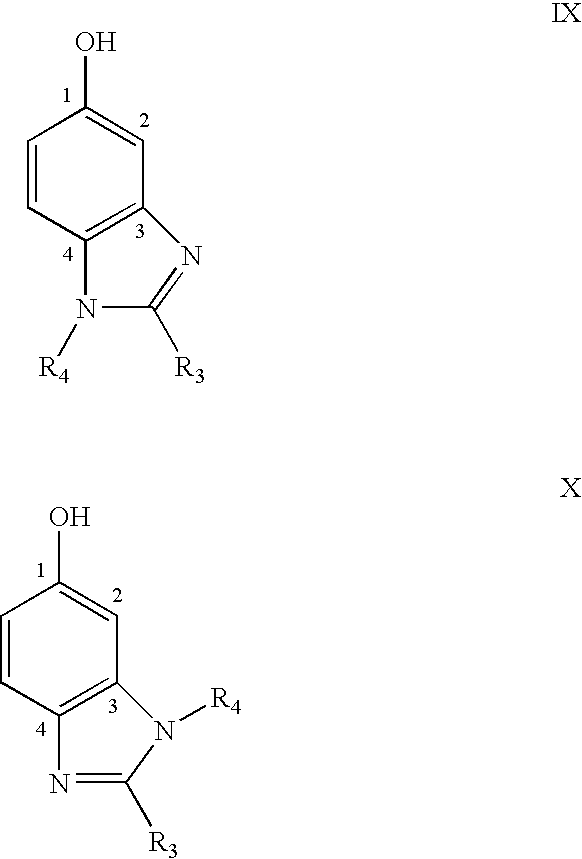Regimen for the administration of rifamycin-class antibiotics
a technology of rifamycin and rifamycin, which is applied in the field of methods of treating bacterial infections, can solve the problems of affecting the survival rate of rifamycin-class antibiotics, the inability of many bacterial infections to remain dormant but still viable and capable of causing disease, and the inability to cause severe adverse reactions, so as to reduce the occurrence of adverse reactions
- Summary
- Abstract
- Description
- Claims
- Application Information
AI Technical Summary
Benefits of technology
Problems solved by technology
Method used
Image
Examples
example 1
10 mg Rifalazil Twice Weekly in a Non-Ascending Regimen
[0118] Rifalazil is administered to a human subject in doses of 10 mg each on Days 1, 4, 8, 11, 15, 18, 22, and 25. The subject is monitored for adverse experiences, including flu-like syndrome. The average daily dose of rifalazil given in week 1 of the regimen is 2.85 mg / day. The average daily dose of rifalazil given in weeks 2-4 is 2.85 mg / day. The average initial daily dose is 3.33 mg / day. The average daily dose over two subsequent dosing days is 2.85 mg / day. The average daily dose over five subsequent dosing days is 2.78 mg / day.
example 2
5 mg Rifalazil Once Weekly in Week 1, 5 mg Twice Weekly Thereafter
[0119] Rifalazil is administered to a human subject in doses of 5 mg each on Days 1, 8, 11, 15, 18, 22, and 25. The subject is monitored for adverse experiences, including flu-like syndrome. The average daily dose of rifalazil given in week 1 of the regimen is 0.714 mg / day. The average daily dose of rifalazil given in weeks 2-4 is 1.43 mg / day. The average initial daily dose is 0.714 mg / day. The average daily dose over three subsequent dosing days is 1.5 mg / day.
example 3
12.5 mg Rifalazil Once Weekly in Week 1, 12.5 mg Twice Weekly Thereafter
[0120] Rifalazil is administered to a human subject in doses of 12.5 mg each on Days 1, 8, 11, 15, 18, 22, and 25. The subject is monitored for adverse experiences, including flu-like syndrome. The average daily dose of rifalazil given in week 1 of the regimen is 1.79 mg / day. The average daily dose of rifalazil given in weeks 2-4 is 3.57 mg / day. The average initial daily dose is 1.79 mg / day. The average daily dose over three subsequent dosing days is 3.75 mg / day.
PUM
| Property | Measurement | Unit |
|---|---|---|
| time | aaaaa | aaaaa |
| pH | aaaaa | aaaaa |
| time | aaaaa | aaaaa |
Abstract
Description
Claims
Application Information
 Login to View More
Login to View More - R&D
- Intellectual Property
- Life Sciences
- Materials
- Tech Scout
- Unparalleled Data Quality
- Higher Quality Content
- 60% Fewer Hallucinations
Browse by: Latest US Patents, China's latest patents, Technical Efficacy Thesaurus, Application Domain, Technology Topic, Popular Technical Reports.
© 2025 PatSnap. All rights reserved.Legal|Privacy policy|Modern Slavery Act Transparency Statement|Sitemap|About US| Contact US: help@patsnap.com



